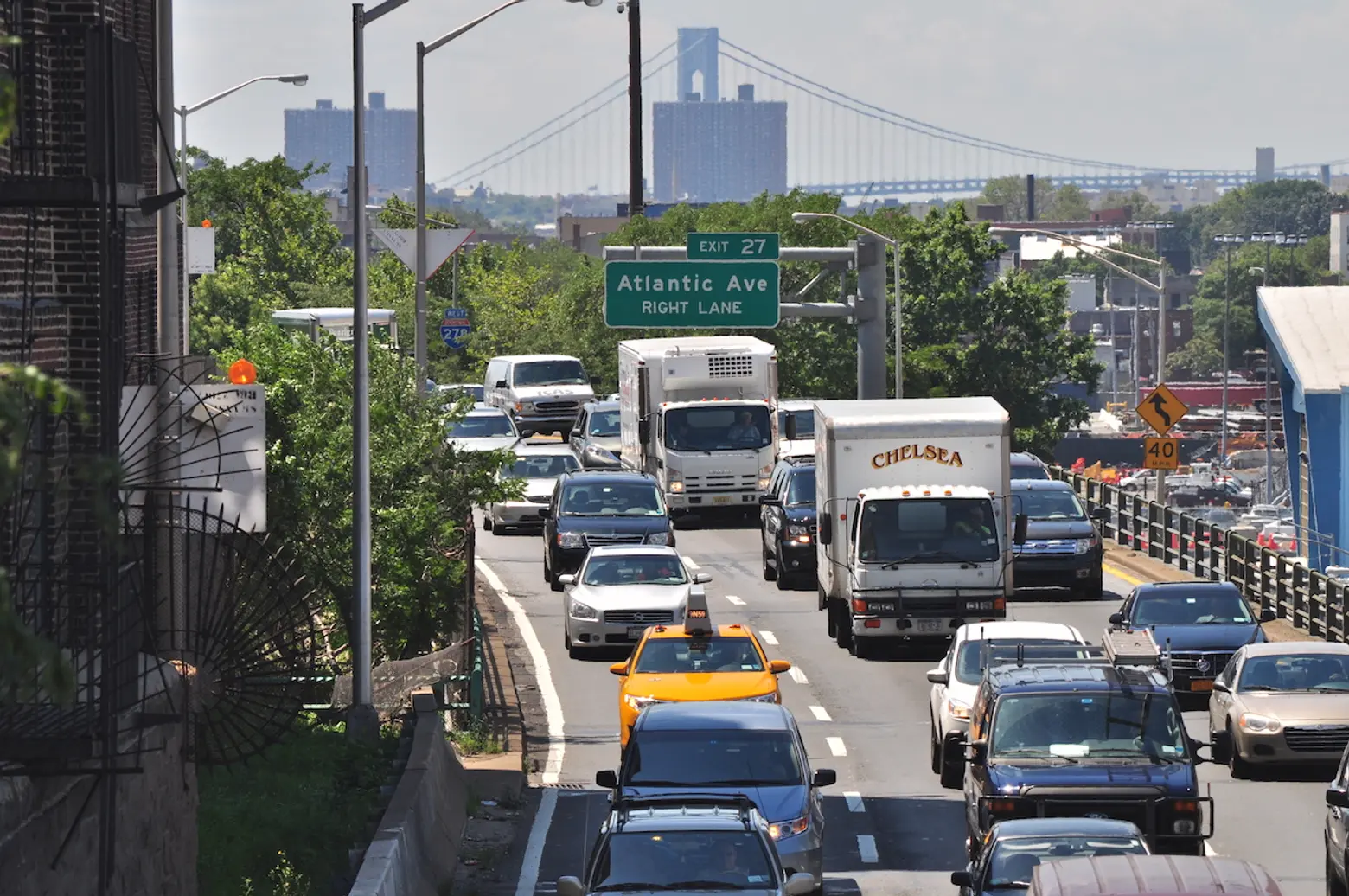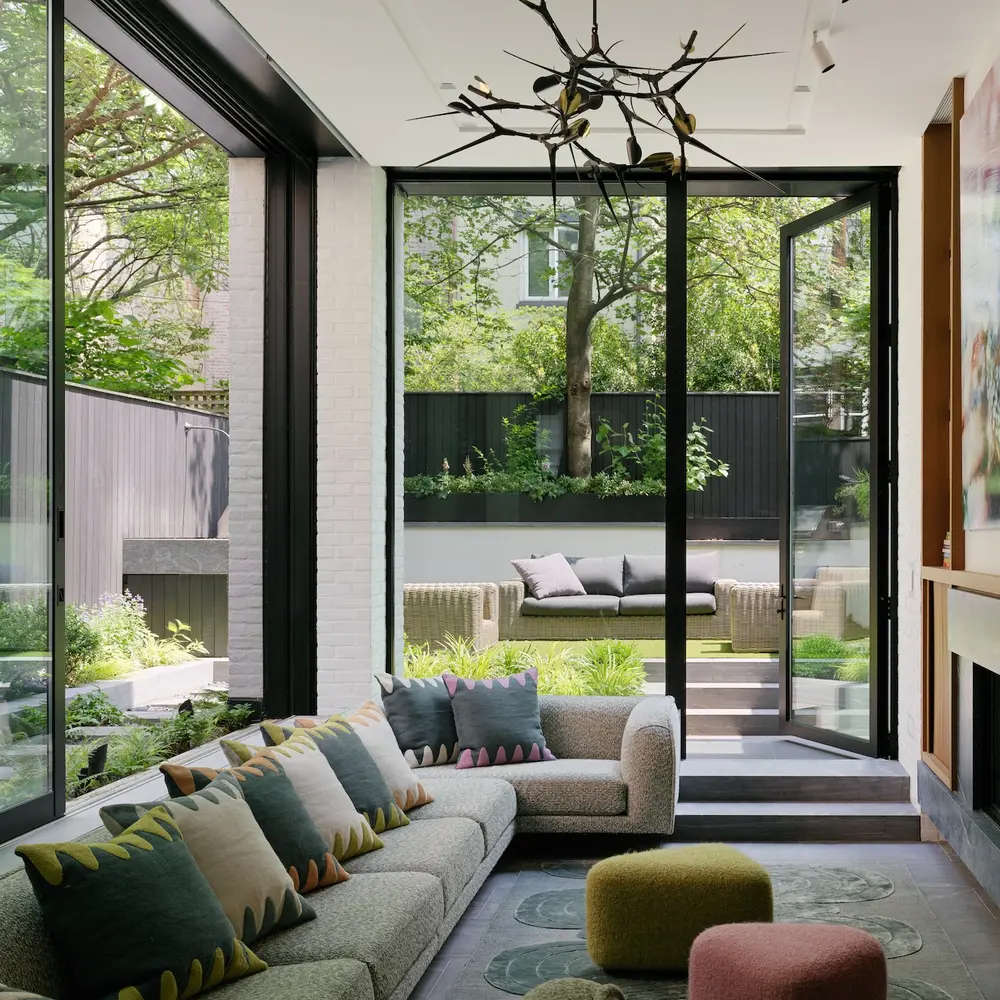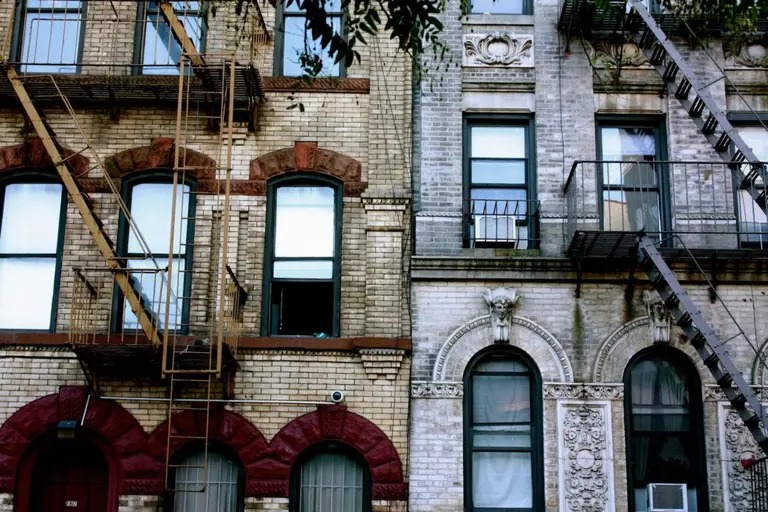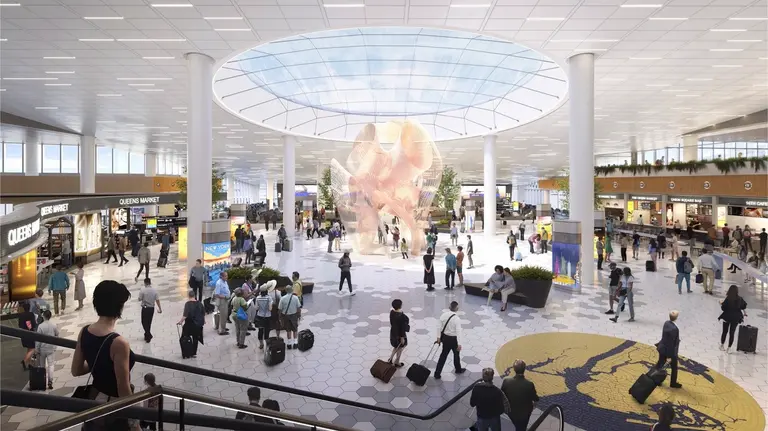RPA report for BQE redesign includes ideas for sparing Brooklyn Heights Promenade

Image: Wikimedia cc.
A report released today by civic think tank Regional Plan Organization highlights options for the impending Brooklyn-Queens Expressway reconstruction that would appear to upend conventional highway reconstruction policy. The new report suggests that the DOT could actually reduce the number of lanes needed when redesigning the expressway’s 1.5-mile “Triple Cantilever” under the historic Brooklyn Heights Promenade, in addition to looking at congestion pricing, HOV restrictions and two-way tolling for the Verrazano Bridge. The demand management policies outlined contain both immediate benefits–like eliminating the need to block access to the historic Brooklyn Heights Promenade–and long-term rewards like reducing pollution.
If the Department of Transportation works with the state and federal government on the policy front when redesigning the expressway, the RPA (along with Brooklyn civic group A Better Way) highlights what it sees as five crucial policy options that should be evaluated:
- Congestion pricing. A version of congestion pricing endorsed by the Fix NYC Advisory Panel showed a 13% reduction in overall traffic destined for Manhattan. Furthermore, by equalizing the tolls across the Hugh Carey Tunnel and the East River crossings, a large portion of Manhattan-bound traffic would be diverted to the tunnel.
- Two-way tolling on the Verrazano Narrows Bridge.
- HOV 3+ on the free bridges. When the city enacted this policy after 9/11, it had a significant impact on peak period traffic on the East River crossings, resulting in a 23% reduction.
- HOV 3+ on the full length of the BQE. This restriction would affect all vehicles, not just those entering or leaving Manhattan.
- Last, but not least, lane reduction. The report points out that a smaller highway could actually stop some people from making the trip and accommodate a smaller demand, citing cities like Seattle, Paris, Seoul, Rochester and Milwaukee, who have transformed their highways into walkable green spaces without causing major traffic snarls and adding the benefit of approaching carbon reduction goals by limiting the number of cars and trucks on the road.
Tom Wright, President and CEO, Regional Plan Association said in a statement, “New York should join the growing list of cities that are updating, scaling back, and in some instances, removing their highways. The BQE was conceived with a mid-20th century urban planning mindset that sought above all to accommodate the automobile, without regard for the environment or disrupted neighborhoods. With more cars on the road than ever, creating smog and limiting residents’ ability to get around, the revitalization of the BQE is a perfect time to reconsider the role of personal vehicles in New York, and stand with cities across the globe to prioritize smaller thoroughfares, boulevards and open green spaces.”
You can see the report in its entirety here.
RELATED:
- New proposal turns the BQE’s triple cantilever into a three-level linear park
- NYC Comptroller proposes turning the BQE into a truck-only roadway with a park on top
- BQE repair plan could block view of NYC skyline from Brooklyn Heights
- Brooklyn Heights Promenade could close for six years during BQE repairs



























